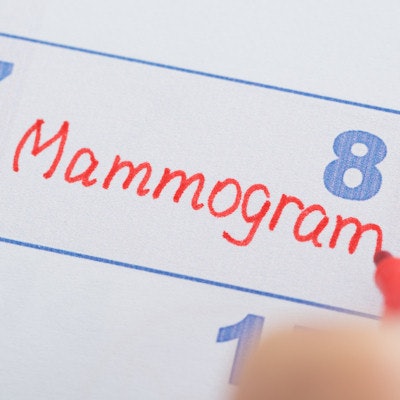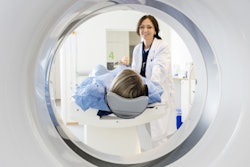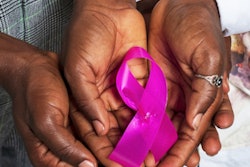
Text message reminders can help increase mammography uptake by 4% compared with standard care at urban safety-net hospitals, according to research to be presented April 8 at the American Society of Breast Surgeons (ASBS) annual meeting in Las Vegas.
In her presentation, Dr. Asha Nanda from the University of Missouri-Kansas City presented the team's results, which suggested that mammography compliance increased "significantly" if women responding to texts scheduled an appointment at that time.
"These results are pretty significant, and I think if they [interventions] are implemented on a wider scale, have the potential to really decrease mortality associated with breast cancer," Nanda told AuntMinnie.com.
Previous research suggests that women are diagnosed with later-stage breast cancer at urban safety-net hospitals, which provide healthcare for patients regardless of their insurance status or ability to pay. Researchers wrote that this trend is associated with the lack of screening mammography uptake.
"The problem with these safety-net hospitals is that the resources are limited. We don't have money pouring in from every direction for these types of things," said Nanda, who also pointed out that barriers such as transportation access, language issues, and socioeconomic issues play a part.
Nanda led a study published in Annals of Surgical Oncology in 2020 that showed a two-part intervention using phone calling and scheduling assistance increased mammography uptake by 12% among a safety-net population. They also found that scheduling was a critical factor to the increased uptake, with phone calls alone being no better than usual care.
However, they also found that phone calling and scheduling assistance is challenging and places a burden on resources.
Text messaging has shown promise in mammography uptake in previous research. Nanda et al wanted to find out whether a text-based intervention with reminder and scheduling components could increase mammography uptake over the course of three months compared with usual care.
They also wanted to find out whether uptake differed by specific versus open-ended scheduling prompts, rate of platform interaction, scheduling rate, scheduling compliance, and whether outcomes differed by clinic.
The researchers looked at data from 1,277 women ages 50 to 65. The women did not previously have a screening or diagnostic mammogram in the past two years but had established care at a primary care clinic within the university's safety-net hospital.
The women were split into three groups: Text reminder with specific scheduling options (423 women), text reminder with open-ended scheduling options (420 women), and usual-care control (434 women). Women in the two intervention groups could use two-way texting, and up to three texts were sent to each patient.
| Text-based interventions vs. usual care for mammography uptake at a safety-net hospital | |
| Intervention with specific scheduling options | 10.2% |
| Intervention with open-ended scheduling options | 10.16% |
| Usual care | 6.2% |
Researchers also found that within the safety-net population, 14.8% of women responded to text messaging.
"There were 9% of participants who scheduled an appointment for a mammogram via text, of which 63% received a mammogram," the researchers wrote.
The team also found that mammography compliance did not differ by the type of scheduling offered or by primary care clinic.
However, text-based interventions are less effective than the 12% increased uptake seen with phone call-based interventions. Nanda said this may be because the safety-net population is harder to reach and may need a more complex, personalized approach.
She also said future studies will combine different types of interventions to design a multipronged approach and that radiologists have a large role in making this approach successful.
"Logistically speaking, they [radiologists] are the people we are making an appointment with," Nanda told AuntMinnie.com. "They drive the success of the intervention based on availability and willingness to make this intervention happen."




















